This Croatia Guide will show you how to travel to this beautiful country and see the most for the best prices. We will give you additional information about when to plan your trip to Croatia and a few more local tips about their culture, habits, best places to visit, and hidden treasures. So, if you’d like to learn more, please read on.

©Shutterstock
Our website includes affiliate links. So, remember that we may receive commissions when you click our links and make purchases. Please read our legal disclaimer document for more information about our Affiliate disclaimer and other disclaimers like the Fair-Use disclaimer.
Why should you visit Croatia?
Firstly, Croatia offers beautiful beaches, picturesque towns, stunning scenery, and national parks. Many travelers only associate Croatia with its Adriatic coast, but the country has much more to offer. Its national parks provide the perfect opportunity to relax in stunning natural surroundings. Additionally, Croatian cities offer fantastic attractions and rich historical and cultural experiences.
What is the best time to visit Croatia?
Deciding when to visit Croatia is a personal choice; that’s why we in this Croatia Guide won’t give you too much advice. The choice is always yours. The most important thing is to know yourself and then decide what kind of vacation you should choose. The peak season is during July and August, offering sunny weather, warm seas, and lively nightlife. For a more peaceful experience, consider visiting in June or September to avoid the summer crowds. The off-season also offers unique experiences and allows you to explore Croatia beyond the summer season. Feel free to email us for personalized holiday planning.
Off-season vs. high season
During winter, small Croatian coastal towns become quiet, with restaurants and shops closing. Locals often ski in neighboring countries or stay home. The streets, busy in summer, become deserted, and you may only encounter stray cats. If you’re not seeking a peaceful retreat, avoiding these towns during winter, especially the islands, is best.
Note: For more information, we recommend reading our article: The best time to visit Croatia.
How long should you spend in Croatia?
Are you planning a trip to Croatia? Whether visiting for a few days or weeks, you’ll have a great time. Ten to fifteen days is perfect for a first-time visit, allowing you to explore all the must-see spots. But Croatia’s geography makes it take longer to travel between destinations than expected. For example, driving from Zagreb to Dubrovnik takes over six hours. However, in ten days, you can still see all the highlights.
Getting around Croatia
In our Croatia Guide, we will give you a few tips and hacks on how to travel to this marvelous European Country. Firstly, Croatia’s coastline and mountainous topography make travel scenic and time-consuming. However, a growing network of toll motorways has sped up journey times for drivers. Croatia’s train system covers parts of the north and east but is of little use on the coast, where the country’s extensive and reliable bus network comes into its own. Ferries and catamarans provide the only route to the islands, and island-hopping by boat offers some of the most memorable journeys Croatia has to offer.
By train
Croatian Railways (Hrvatske željeznice) offers a reasonably efficient service, slightly cheaper than buses where routes overlap. Trains are slower and less frequent than buses, but can be used to visit inland Croatia. There are two types of trains: slow ones (putnički) and inter-city trains (I.C.). Tickets can be purchased at the station or on the train with a surcharge. Seat reservations are mandatory for some inter-city services. Timetables are usually displayed at stations, and Inter-Rail and Eurail passes are valid for travel in Croatia.
By bus
Croatia’s bus network is well-integrated, with organized stations and efficient booking facilities. Inter-city buses are modern and air-conditioned, making long-distance travel comfortable. However, buses on shorter routes may need to be more relaxed. Most places in the country can be reached by bus, with hourly departures on principal routes. Rural areas may have limited daily service, with no buses on weekends. Departures are tailored to the needs of locals, with early morning and mid-afternoon trips.
Tickets and fares
At a big city bus station, you must obtain tickets from ticket windows before boarding the bus. The ticket will show the departure time, platform number, seat number, and the bus company’s name. It’s a good idea to purchase tickets a day or two in advance, especially for popular coastal destinations or long trips. Fares are slightly cheaper than in Western Europe but vary depending on the company and the region. Some companies offer return tickets, which are more affordable than buying two one-way fares.
Additionally, you’ll you’ll be charged extra for rucksacks and suitcases. For municipal buses in towns and cities, tickets should usually be purchased in advance from newspaper kiosks and then canceled by punching them into the machine on board. In most cases, you can also buy tickets from the driver.
By ferry
Several ferry services, mainly operated by Jadrolinija, connect the Croatian mainland with the Adriatic islands. Shorter island hops have lower foot passenger fares, and vehicles incur additional costs. Catamarans offer faster travel but are slightly more expensive than ferries. Tickets for catamarans can only be purchased on the day of departure.
By plane
The main advantage of flying is the time it saves. For example, a plane journey from Zagreb to Dubrovnik takes only an hour, while traveling overland would take an entire day. Croatia Airlines operates domestic flights between Zagreb and Pula, Split, Zadar, and Dubrovnik. The cost of flights can vary significantly depending on the time of year and how far in advance you book. European Coastal Airlines provides short-hop flights from Split to Jelsa and Vela Luka, as well as from Pula to Mali Lošinj and Rab, using their fleet of seaplanes. Timetables and prices vary according to demand. This Croatian Guide recommends tracking flights to get the most valuable deal.
By car
Croatia has an extensive road system, but roads beyond the main highways may need better quality. Tolls apply on major routes, and speed limits vary. You need a valid driver’s license and registration documents to drive in Croatia. Headlights must be on at all times between October and March. Parking in big cities can be difficult, and illegally parked vehicles may be towed away. Petrol stations are open from 7 am7 am to 7 pm7 pm, with 24-hour stations in larger towns. The Croatian Automobile Club provides a 24-hour emergency service for breakdowns.
Car rental
Car rental in Croatia can be affordable if you rent the vehicle for a reasonable period. Furthermore, major rental chains have offices in all the larger cities and at Zagreb airport; their addresses are detailed in the Guide. Most travel agents in Croatia can help you organize car rentals through one of the big international firms or a local operator. It’s usually cheaper if you arrange a rental in advance.
Tolls
Croatia’s motorway network is well-maintained and expanding. Toll charges are based on distance and vehicle class. You can pay by credit card, cash, ETC. For more information, visit our page “Toll Charges Croatia.”
Taking taxis and using ride-share apps in Croatia
Getting a taxi in Croatia is challenging but manageable. Many apps are available, and you can pay by card. The demand for taxis has risen due to an increase in tourists. Croatian cities and islands have local taxi providers or Uber and Bolt drivers. Taxis are also available in some rural areas. Taxis are most accessible at bus and train stations, airports, and major cities. Before traveling, check if taxis are available, and consider public transport as an alternative.
Parking in Croatia
Parking in Croatia varies depending on the city, coastal areas, and national parks. Here’s a general guide to parking in Croatia. Paid parking zones are marked with different colors. Blue zones are usually the most expensive and are closest to the city center. You can pay with coins, SMS, or a parking app at the parking meter. Always follow parking signs and rules to avoid fines or towing. Consider using public transport or parking to avoid the stress of parking in crowded areas, especially in Dubrovnik.
Warning: Parking spaces around the historic center of Dubrovnik are limited. Always inquire about prices beforehand to avoid unexpected high costs.
Guide to Croatia’s Regions
Croatia boasts five major, diverse regions: Dalmatia, Istria, Kvarner, Central Croatia, and Slavonia. Each area has fascinating towns and cities, beautiful natural scenery, and exquisite cuisine. From island hopping in Dalmatia to truffle hunting in Istria, each region offers diverse experiences that will create lasting memories. This Guide to Croatia’s regions will help you plan your next Croatia holiday, whether looking for picturesque villages, secluded coves, or spectacular national parks.

© piotrbb / Shutterstock
Dalmatia
Croatia’s most famous region, Dalmatia, offers beautiful islands, medieval cities, and Adriatic beaches. The inland area features vineyards, olive groves, charming villages, and dramatic mountains. The region has five UNESCO World Heritage Sites and offers fresh fish, seafood, and indigenous wines.
Start your journey through the former Republic of Dubrovnik area from its very core. Dubrovnik, one of the most dazzling cities in the world, is a rare example of indescribable beauty, spiritual greatness, and human strength.
The center of Dalmatia, or as its residents would call it, the “center of the whole world,” is Split, the largest city in the Croatian part of the Adriatic coast. The old city center, under the protection of UNESCO, is over 1700 years old, and it was created when the Roman Emperor Diocletian decided to build his palace there.
From Split, you can easily access other excellent parts of the region, such as famous islands (Hvar and Korcula), national parks (Krka National Park, Kornati National Park), and exciting towns such as Zadar, Sibenik, Primosten, and Trogir.
Tip: The easiest way to explore Dalmatia is by small ship cruise, as routes often feature Split and Dubrovnik along with islands like Korcula, Hvar, Brac, Vis, and Mljet. This eliminates the hassle of organizing accommodation, transport, and guides.
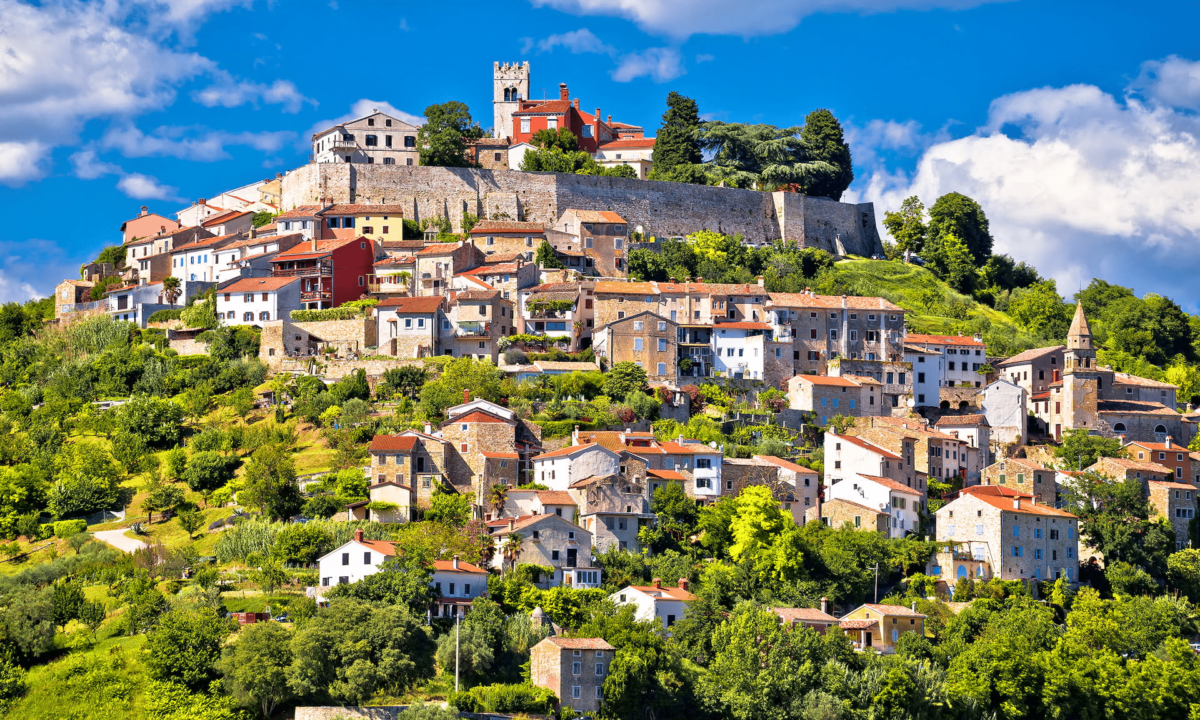
©realcroatia.com
Istria
Istria is a region west of Croatia, near Slovenia and Italy, and is the most developed region in the country. Firstly, it has a beautiful coastline, medieval towns, forest vineyards, and olive groves. Pula, the central city, has a 1st-century AD Roman amphitheater, while Rovinj has a well-preserved Old Town. The region’s rich history is showcased at the Roman arena, which hosts the region’s Pula Film Festival and concerts. If you want to discover more about the area, we recommend reading our related articles. However, we recommend visiting Viator’s offers if you wish to book a tour.
Tip: During the summer, fast catamaran ferry crossings from Venice to Pula, Rovinj, and Porec make it easy to combine a holiday in Istria with Italy. Alternatively, you can cross the border into Slovenia and visit the beautiful Lake Bled.
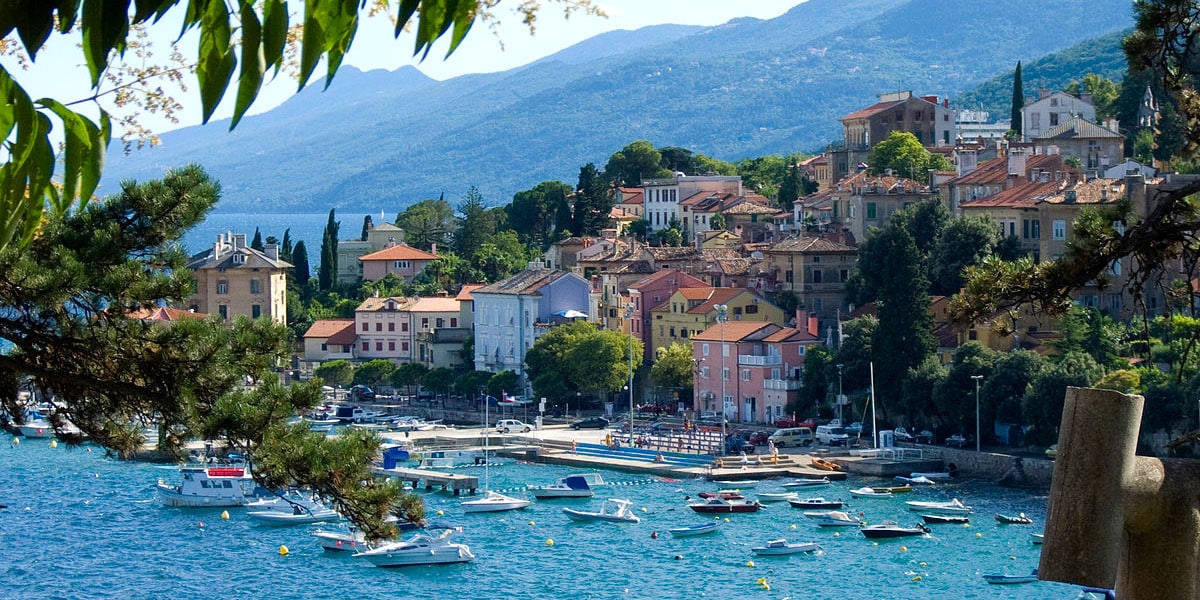
©croatianvillas.com
Kvarner
Kvarner, a diverse region in Croatia, is known for its dramatic natural beauty. It includes the coastal area of Kvarner Bay, several islands, and the mountainous Gorski Kotar area. Famous islands in the region include Rab, Krk, Losinj, and Cres, offering various recreational activities. Kvarner is also home to elegant towns like Opatija and Rijeka, which boast a rich legacy of Habsburg-era architecture and provide easy access to hiking trails in protected forests within Risnjak National Park and Ucka Nature Park.
Interesting: Opatija was one of the first beach resorts in Central Europe and once the main seaside resort for the Austro-Hungarian monarchy. Renowned for wellness getaways, it still hosts top-notch wellness facilities today, including thalassotherapy, which harnesses the soothing properties of the sea.

©static.standard.co.uk
Central Croatia
Explore Central Croatia, known for historic sites, modern attractions, and natural beauty. Visit Zagreb, the vibrant capital, and Varazdin for Baroque-style architecture. Take advantage of Plitvice Lakes National Park. Discover rich cultural tapestry and adrenaline-filled adventures in Lika and Karlova. It’s an enchanting outdoor experience. Explore opulent caves, proud fortresses, and historic towns to glimpse Croatia’s rich history and legends.
Tip: To avoid high temperatures and larger crowds, visit Plitvice Lakes National Park early in the morning.
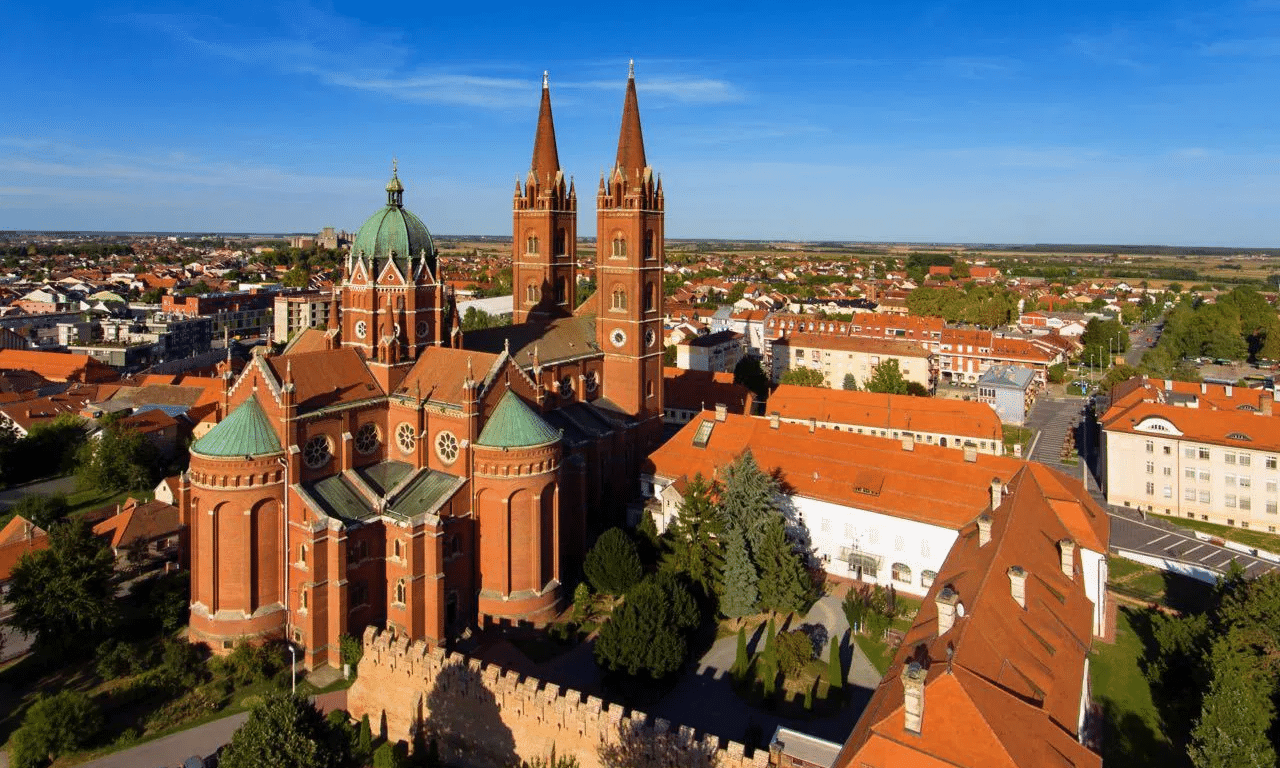
©Boris Kacan
Slavonia
Slavonia, located in northeastern Croatia, offers an authentic experience away from the big tourist crowds. It features historic cities, such as Vukovar and Dakovo, which are known for their beautiful cathedrals and landmark architecture. The region, often called the “Golden Valley,” is where the Danube, Drava, and Sava rivers meet, offering stunning natural landscapes. Kopački Rit Nature Park, often called the “Croatian Amazon,” is a well-preserved wetland area with diverse wildlife and picturesque oak forests near Tikveš Castle.
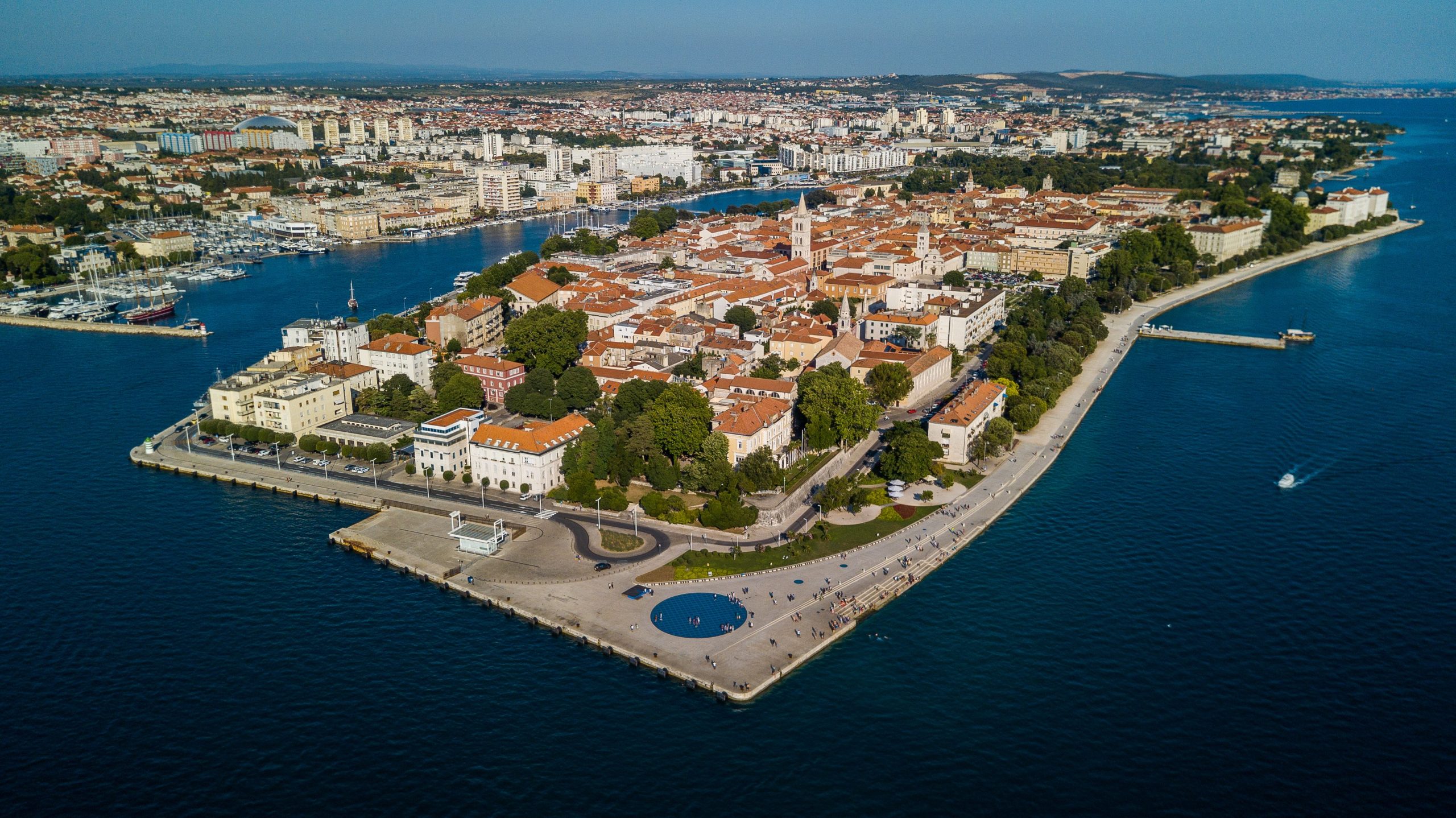
©
Top things to do and see in Croatia.
Fall in love with Croatian cities and towns.
Croatia offers a diverse range of cultural, natural, and historical attractions. Dubrovnik, known as the Pearl of the Adriatic, is a well-preserved late-medieval city with Gothic, Renaissance, and Baroque architecture. Zagreb is a diverse city with historic churches, towers, and markets. Šibenik is the oldest native Croatian city, home to the Cathedral of St. Jacob and St. Nicholas fortress. Zadar offers a perfect blend of culture, history, nature, and beautiful beaches, with a vibrant cultural scene and nearby nature parks and national parks. The Emperor’s Palace in Split is a significant example of late-ancient architecture.
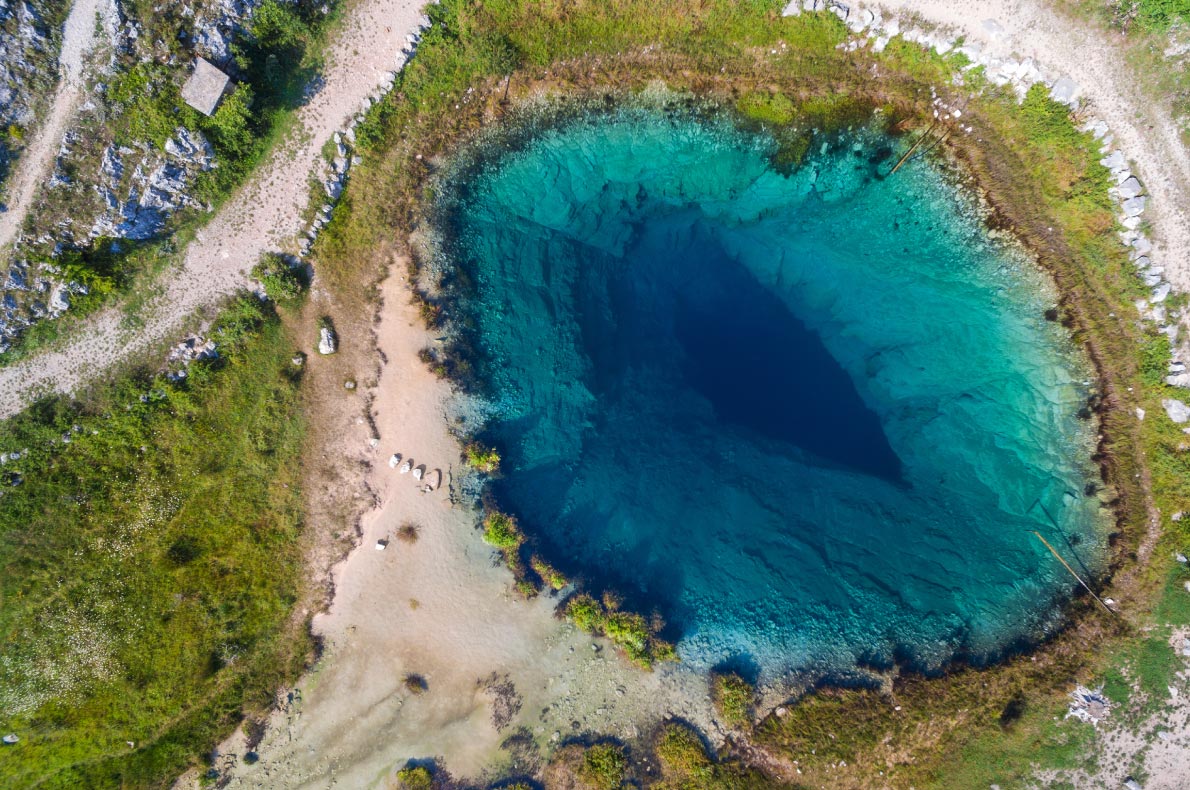
©paul-prescott-european-best-destinations

©mike-mareen-european-best-destinations.
Admire the natural beauty of the National Parks.
The Plitvice Lakes stand as Croatia’s oldest national park, holding UNESCO recognition and featuring 16 interconnected lakes and stunning waterfalls. Divided into the Upper Lakes and Lower Lakes sections, the area is a popular tourist destination, often crowded in the summer. Visiting early or late in the day is best to avoid peak crowds. Each season presents a unique charm in the lakes. Other noteworthy national parks in Croatia include Kornati, Krka, Brijuni, Mljet, and Velebit, offering diverse landscapes and activities for exploration.
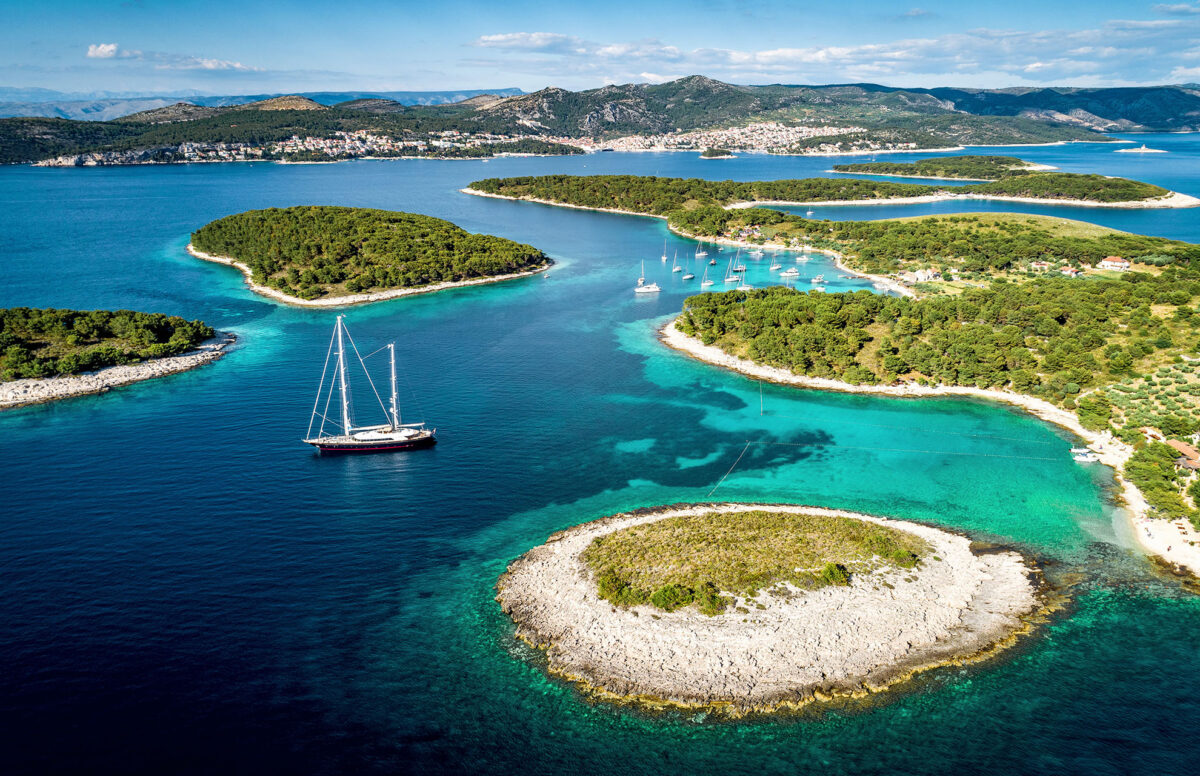
©venturesailholidays.com
Must-see islands
Croatia’s coastline is undeniably stunning, with its clear waters, vivid blues, and lush shores creating a picturesque image of paradise. The country islands offer unparalleled glamour, relaxation, and unforgettable experiences, making them an ideal holiday destination. With over 1000 islands featuring some of the best beaches in Croatia, each island has something unique to offer. Hvar, a world-famous peninsula, is known for its sunshine, lavender, olives, and wine. Dugi Otok is a sleepy fishing island with charming villages and authentic cuisine. Vis is rich in history, offering an uncommercialized experience, organic local produce, and the beautiful Stiniva beach and famous blue caves. Korčula is home to a compact town with a Gothic-Renaissance cathedral and rustic agrotourism eateries. Brač is home to the magnificent Zlatni Rat beach, which offers excellent water sports facilities and scenic hiking paths.
Discover Wonderfully different Istria.
The Istrian coast offers beautiful beaches, but the region’s essence lies in its central green hills. Visitors can enjoy truffle hunts, olive picking, and outdoor activities like paragliding and rafting. Don’t miss the lovely town of Grožnjan, home to many artists, and nearby Motovun with its picturesque village and truffle-themed Buzet. Rovinj is a small town on the west coast of the Istrian peninsula, known for its historic core, beautiful beaches, and good-quality resorts. It’s a favorite spot for a romantic getaway, with delightful dining options and traditional boat rides around the peninsula. Nearby, you can also take day trips to explore the Istrian interior, visit Piran in Slovenia, or even Trieste in Italy.
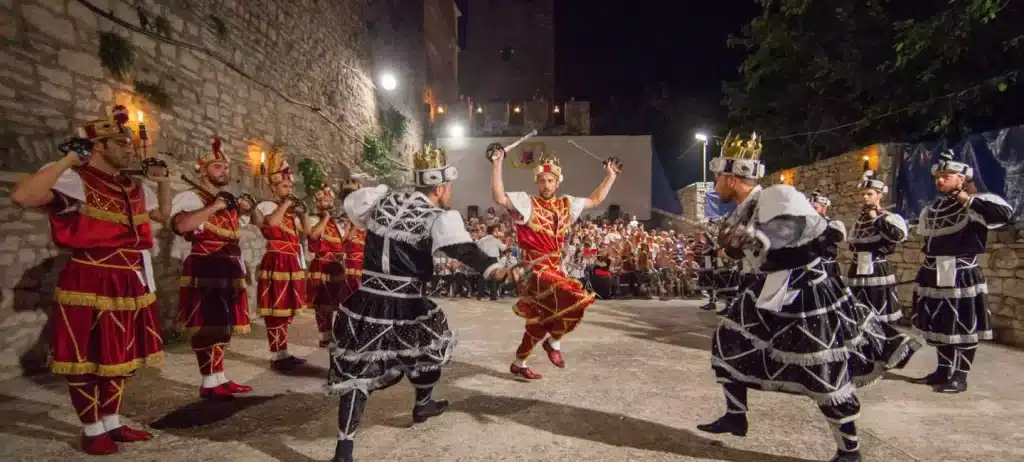
©shutterstock_52207960
Attend Festivals in Croatia
During the Carnival period, around ten groups of men from the Kastav area participated in processions through their own and neighboring villages, wearing masks, different headgear, and sheepskin throws turned inside out with bells. Known as zvončari, the bell ringers celebrate their traditional carnival by touring neighboring villages, wearing animal masks and sheepskins, and carrying axes and clubs. Croatian culture is expressed through “klapa” singing, a facet of the old Croatian culture, with the “klapa” singing Festival in Omis preserving this tradition. The famous sword dance Moreška and the Kumpanija chain battle dance with swords are traditional cultural festivals in Korčula, Croatia, during the summer. Both dances are Protected Cultural Items of the Republic of Croatia and have deep historical roots dating back to the 17th century.

©Viator

©leonidastravel.com
Marvel at Northern Gems
First, the Krapina Neanderthals discovered the beauty of Hrvatsko Zagorje, choosing these hills and caves for their beauty. But for a fairytale exp experience, visit Trakošćan Castle, surrounded by a beautiful forest and a lake, and take a horse-drawn carriage ride through the surrounding area.
The most captivating experiences in Zagorje are found in the medieval castles of Veliki Tabor and Trakošćan, the area’s delightful inns and taverns, and through interactions with the friendly locals.
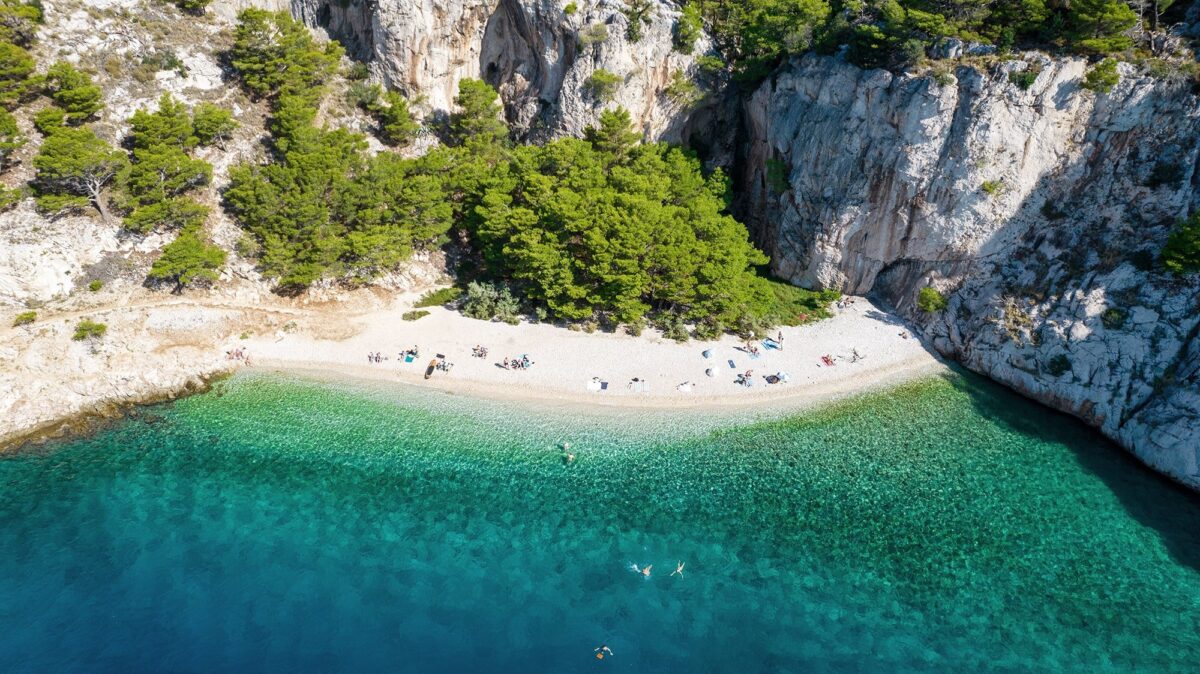
© Valun Beach near Tucepi_shutterstock_2231695673-min
Beaches in Croatia
Croatia’s splendid coast offers a variety of stunning beaches. In Istria, Medulin boasts the beautiful Bijeca Beach, while Paradise Beach awaits with its pristine 1.5-kilometer stretch on Rab Island. Dugi Otok’s Sakarun offers turquoise waters and pine-fringed white sand. In Omiš, Beach Punta provides stunning views of the Dinara peaks and the Cetina River mouth.
During the summer, visitors head to Bol on the island of Brač to visit the iconic Zlatni Rat beach with its unique triangular shape and powdery white sand. The southern coast offers solitude with its caves, coves, and cypress forests stretching to the sea. Nearby, the Black Desert features an ancient monastery hidden under the cliffs. Above Bol, Vidova Gora peak provides a stunning viewpoint of Brač’s pastoral interior, reachable by car or hike.”

©bolcroatia.com
Hidden Adriatic Hotspots
You can enhance your sailing experience along the Croatian coast by exploring the numerous caves on the islands. Thanks to the unique geography of the coast, Croatia is home to various natural formations, including sea caves that are easily accessible to visitors. One must-visit spot is the Blue Grotto on the island of Cres, known for its stunning turquoise hues and tranquil atmosphere. Another famous destination is the Blue Grotto on the isle of Biševo, with its magical turquoise-blue reflection that can be enjoyed throughout the day. Both caves offer a unique and memorable experience for visitors.
How To Choose Your Destination in Croatia?
As mentioned in our Croatia Guide, the country is more significant than one might initially think. Therefore, careful planning is advised. Firstly, you have to know what you wish to visit. Then, you must know your budget limits and what kind of traveler you are: whether you are a solo traveler, traveling with friends or family, or even as a gay or solo female.
If you’re considering a trip to Croatia, immerse yourself in these captivating regions:
In the Istrian region, you will discover the charming towns of Porec, Rovinj, and Pula, each offering unique cultural experiences and stunning landscapes.
Zadar lies in north Dalmatia. It has convenient access to national parks (Plitvice, Krka, Kornati) and their breathtaking natural beauty. It is also a fascinating historical city with Roman and Venetian architecture.
Split is most likely the best base to stay in if you are interested in the Croatian coastal region and want to visit the cities of Game of Thrones. So, embrace the allure of central Dalmatia, where historic islands, seaside towns, and Ottok’s wonders, such as Biokovo Mountain and Krka National Park, await exploration. Furthermore, from there, you will easily access some famous Omišes, such as Hvar.
In the South Adriatic, you will uncover the hidden gems of small villages along the Dubrovnik Riviera, which serve as gateways to captivating destinations like Dubrovnik, the Peljesac peninsula, and the enchanting islands of Korcula and Mljet.
Consider visiting Zagreb. If you arrive from across the ocean, you will most likely land there since it is the biggest airport. Many travelers overlook the country’s capital, but it is equally fascinating as the rest of Croatia. The capital has excellent connections, which will be helpful if you are tight on time.
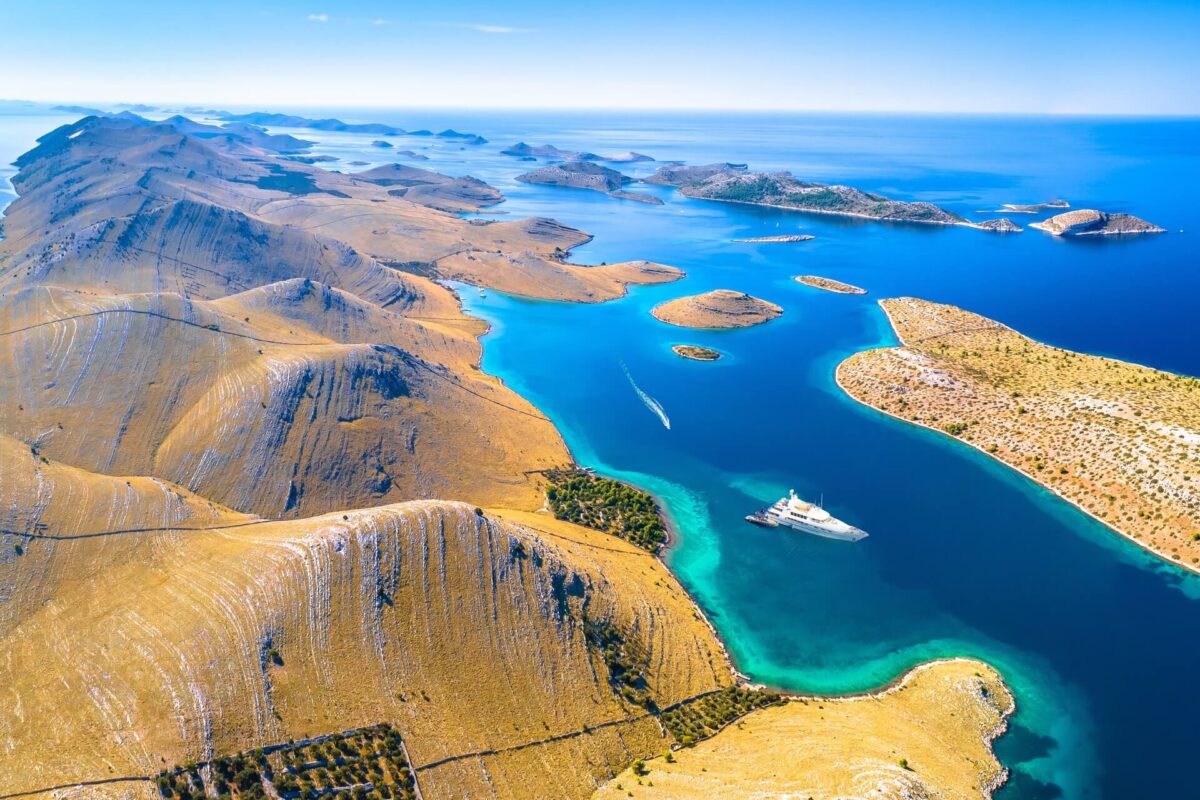
©helmquest.hr
Coast hopping and ferry travel in the Croatian Islands
When island-hopping in Croatia, start in Split or Dubrovnik and take ferries to the archipelago. Consider visiting the islands of Brač, Hvar, Korčula, and Mljet for a great Dalmatian experience. Spend 2-3 days on each island, exploring its attractions and enjoying the beaches. End your trip in Dubrovnik, trying local specialties and watching the sunset.
Some practical travel recommendations about island hopping in Croatia:
Spring and autumn are ideal for visiting the Croatian Islands. Spend 2-3 nights at each stop, rent a car for flexibility, and bring hiking shoes for nature exploration. Look for accommodation near ferry ports to save travel time. Notable events include the Easter weekend procession “Za Krien” on Hvar, the Korčula Sword Dance Festival from June to September, the Hideout Festival on Pag in June, and the Brač Film Festival in August.
What kind of traveler are you?
When planning a trip to Croatia, consider transportation options like driving and buses. These are the best choices, mainly if you have limited time; furthermore, avoid trains due to limited connectivity. Consider your interests, budget, and travel style, whether solo, with family, or as a couple. This will help determine your best destination and accommodation. Safety is critical in the last two options, but more later.
Travel costs
Croatia has become a popular travel destination, attracting over 20 million visitors annually. This Guide provides a breakdown of travel expenses in Croatia, including accommodation, transportation, activities, and meals. While Croatia is more affordable than Western European countries, it tends to be pricier than its Balkan neighbors. Public transport is economical, but taxis can be expensive. Fluctuations in the country’s rates occur between high and low seasons. There are various sightseeing options, from historic sites with entrance fees to free attractions. Plan your trip outside peak summer months to save on accommodation rates and flights. Croatia’s public transportation system is reliable and inexpensive. The country offers diverse accommodations, from budget-friendly options to luxurious villas and high-end hotels.
How to save on accommodation in Croatia?
- Avoid traveling to Croatia in July and August when the prices are the highest! Choose June or September instead.
- Prices are the most affordable if you stay in a fully equipped apartment. Look for apartments that offer a kitchen, laundry facilities, and other amenities that can help you save on additional costs during your stay.
- Accommodation prices change with demand. Book early, opt for a flexible rate, and watch your accommodation choice closely. The closer the date of your holiday, the firmer your booking can be. If you find a better deal in another property or better rates with less flexible conditions, take the opportunity to re-book your accommodation.
- Use the Expedia site to compare accommodation prices in Croatia. It has a user-friendly interface, simple price calculations, and the most extensive choice of accommodation.
The boutique Monte Mulini Hotel in Rovinj has been voted among Croatia’s best hotels for many years.
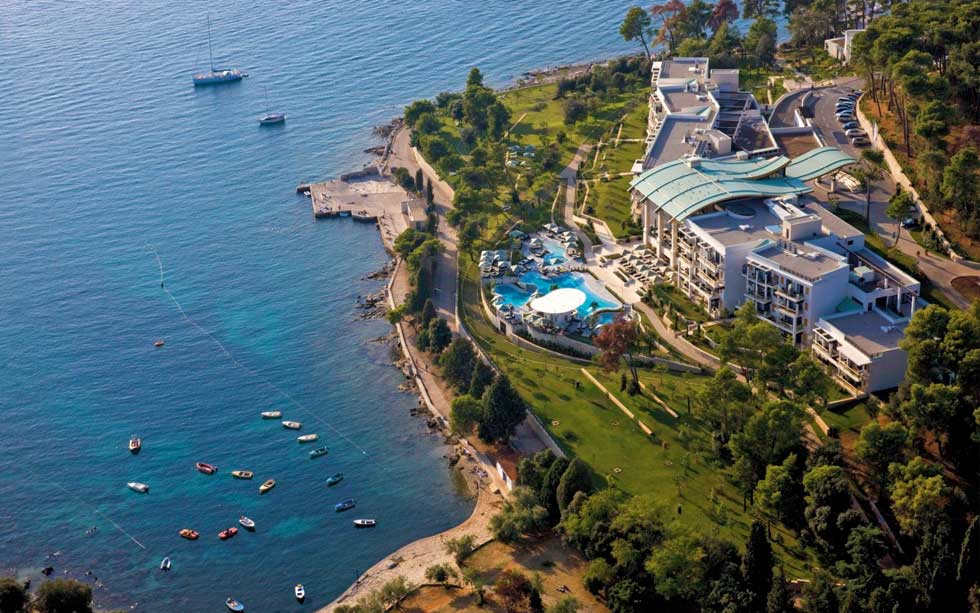
©Booking.com
Hotels & accommodation
In Croatia, you can find various accommodation options, from camping and caravanning sites to luxurious hotels. Whether on a budget or looking for luxury, there’s something for everyone. This Croatia Guide will help you choose the right place to stay.
Here are a few options: hotels, apartments, hostels, and campsites. While local travel agencies can assist with reservations, bureaucratic obstacles have limited the development of bed and breakfasts in Croatia. However, the B&B culture is most prominent in rural areas, offering family accommodation and locally produced food and drink.
Another crucial information is that booking accommodation is necessary if traveling during peak season (July and August) since many hotels and campsites get booked well in advance. Additionally, a few small family-run hotels and B&Bs aim to cater to the mid-range market, offering the comforts and level of service of an excellent three-star hotel in cozy, informal surroundings and at a slightly lower price. They are only found in some parts of the country, but we’ve recommended them throughout the Guide wherever they exist.
When camping, you have to know that wild outdoor camping is prohibited, and most Croatian beaches are unsuitable for sleeping due to their rocky or pebbly nature. Furthermore, naturist campsites are a common feature of the northern Adriatic resorts, with large, self-contained complexes located outside Rovinj, Poreč, and Vrsar in Istria and Krk, Baška, and Punat on the island of Krk.
Additional information: Single travelers usually have to pay the total price of a double room.
Eating and drinking in Croatia Guide
Croatian cuisine
Croatian food is diverse and distinct, influenced by Central Europe’s seafood-rich Mediterranean cuisine and the hearty schnitzel-and-strudel style. Each region offers its specialties. This Guide provides a comprehensive overview of what to eat and drink in Croatia, including national and regional dishes and information about restaurants, cafes, bars, and eateries.
Inland Croatian cuisine features hearty dishes like roast turkey with mini pasta, paprika-stewed meat, and Slavonia and Baranja. Pork-based delicacies like kulen sausage are popular, and the region is also known for its wines, including Graševina and Traminac, available at family-run wineries in Zmajevac and Ilok.
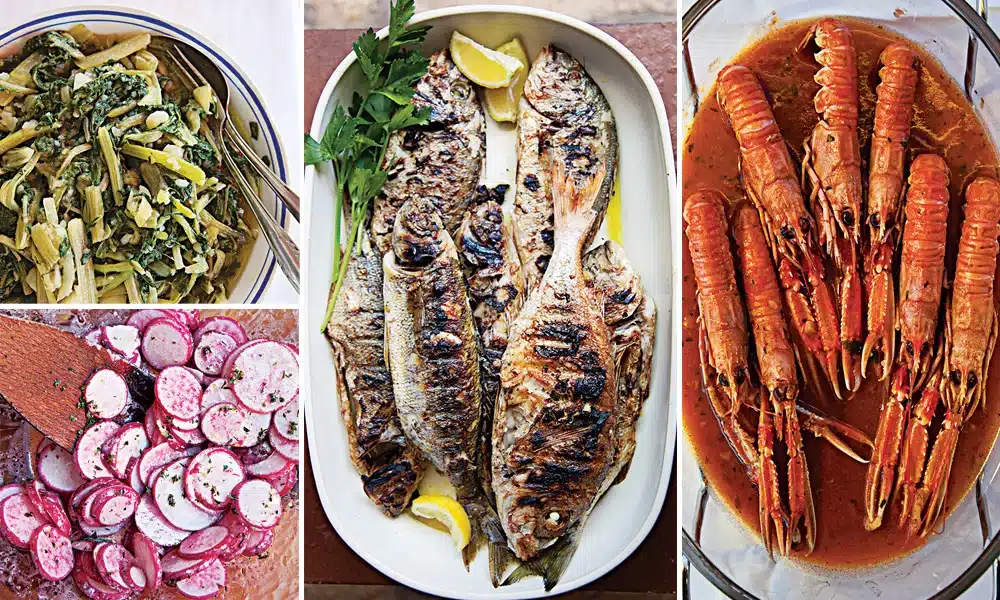
©.saveur.com
Traditional foods of Croatia
Meat dishes
Croatian cuisine features a variety of meat dishes, including grilled or pan-fried meat such as pork or veal. Lamb is often prepared as a spit roast, and goulash (gulaš) is commonly served as a sauce with pasta. Pršut, a home-cured ham, is served in thin slices. The Zagreb Schnitzel (zagrebački odrezak) is a popular dish from Zagreb, Croatia, known for its delicious combination of ingredients, and it is usually served with a lemon wedge and side dishes like French fries or risotto with peas.
Seafood dishes
When visiting the coast, you can enjoy a variety of seafood. Starters include octopus salad and lobster flesh seasoned with olive oil and herbs. Fish dishes are grilled, baked, or boiled and are typically served with Swiss chard, boiled potatoes, and garlic. Popular white fish varieties include John Dory, sole, sea bass, gilt-head sea bream, and scorpion fish. Cheaper options include hake, oily fish, and tiny fish similar to white bait. Other typical dishes include grilled squid and black risotto made from squid with ink included. More upscale establishments may offer crab, oysters, mussels, and lobster delicacies.
Croatian accompaniments and salads
Croatian meals often include boiled potatoes, chips, rice, gnocchi, and vegetables or salad. Local pasta varieties include fuži, šurlice, and mlinci. Bread and salads like zelena salata and mješana salata are everyday. Gherkins and pickled peppers are popular side dishes. Štrukli, a traditional Croatian dish, is filled with cow cheese and can be served as a savory dish or dessert, either cooked in soup or baked with sour cream.
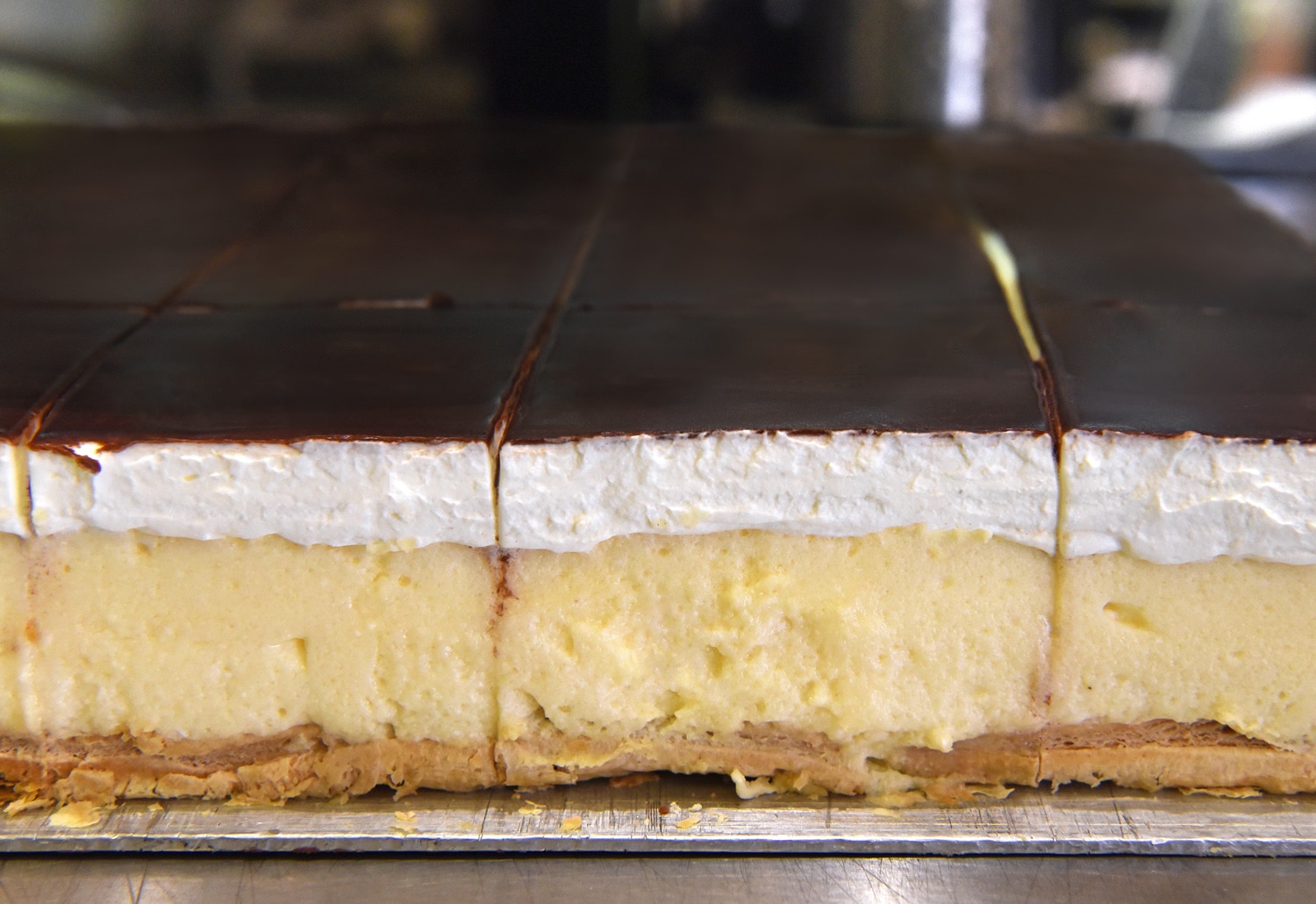
© Florian Pine
Croatian sweets and desserts
In Croatian restaurants, popular desserts include ladled (ice cream), torta (cake), and palačinke (pancakes), often served with toppings like marmalade, chocolate sauce, or walnuts. Fritule is a famous Croatian treat in coastal and inland regions, especially during the Advent Festival in Zagreb. Međimurje, Croatia’s northernmost region, is known for Gibanica, a rich cake with four fillings: walnuts, poppy, apples, and cheese.
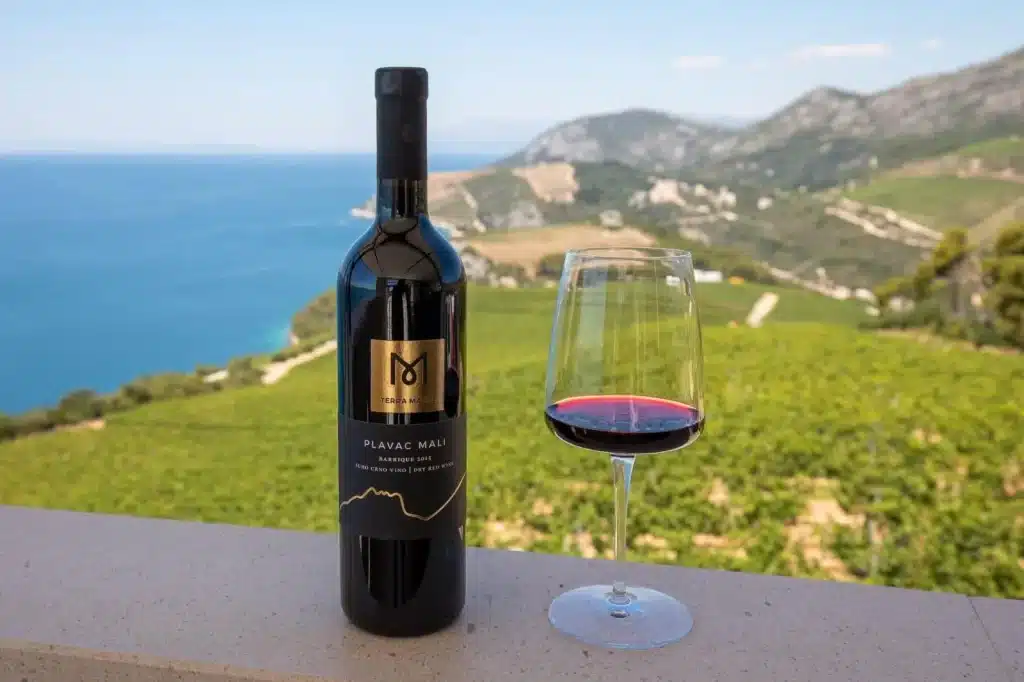
©wineandmore.com
Drinking in Croatia
Drinking takes place in a Kavana(café)—usually a roomy and comfortable place with plenty of outdoor seating and serving the full range of alcoholic drinks, as well as pastries and ice cream—or in a kafić (café-bar), essentially a smaller version of the same thing.
The word “pub” is frequently adopted by cafés and bars attempting to imitate British or Irish styles. Both cafés and café-bars open extraordinarily early (sometimes as early as 6 am) to serve the first espresso to those catching the early-morning ferry. However, alcohol isn’t served until 9 am. Closing time is usually 11 pm, although regulations are relaxed in summer, when café-bars in resort areas may stay open until 2 am. Few Croatian cafés serve substantial food except for the odd sandwich.
Croatian wine
Croatia’s wine industry has grown significantly, with boutique wineries and family businesses leading. Indigenous grape varieties like Istrian Malvasia and Plavac mali are particularly noteworthy. Wines are classified as table wine, quality wine, or supreme wine. Popular wine-based drinks include Bevanda, Gemišt, and bambus. Istrian Malvasia produces medium robust wines, while Plavac mali offers intense flavors and is more affordable.
Croatian beer
Croatia offers a variety of beers, including light lagers like Karlovačko and Ožujsko, and more flavorful options from smaller breweries such as Velebitsko pivo and Vukovarsko. Zagreb’s Medvedgrad brewery produces red beers and porters, while craft breweries like San Servolo and Zmajska pivovara offer a range of light, red, and dark beers. When ordering beer, a malo pivo (small beer) is 0.3 liters, and a Veliko pivo (large beer) is half a liter.
Spirits
Local spirits in this region are mostly known as rakija, which covers all the native fruit-based brandies. Some popular types include Croatia ‘sica, šljivovica, and pelinkovac. Foreign brandies and whiskies are also widely available.
Tea, coffee, and soft drinks in Croatia
In Croatia, coffee is usually high quality and served as a solid black espresso. You can ask for variations like “kava sa mlijekom” (with a drop of milk) or “bijela kava” (similar to a caffè latte). Tea is generally herbal, but you can request “crni čaj” (black tea) or “indijski čaj” (Indian tea). Tap water is usually free with espresso, and mineral water and soft drinks are served in multiples of 10cl. If you want fruit juice, “đus” usually means orange juice.
Croatian culture and etiquette
Here are some typical Croatian social norms and etiquette to remember when invited to someone’s house or to meet for coffee. In Croatia, it’s essential to be aware that being late isn’t considered rude, but spending only 30 minutes with someone for coffee is. When greeting someone, a handshake is needed. Croatia, be mindful of the lean, the kiss, and the level of eye contact. Fighting over the bill at a cafe is customary, especially for your birthday. Croatians have a relaxed attitude towards punctuality, so if someone tells you to meet at 2:00 pm, it usually means around 2:15 pm or later.
Paying with credit cards/cash
When visiting Croatia, both cash and cards are widely accepted. While cards are convenient in tourist areas, money is preferred in smaller, rural establishments. For flexibility, it’s wise to have both cash and a card. Restaurants and transportation accept some money and cards, and splitting bills in restaurants is everyday.
Tipping in Croatia
Firstly, tipping is not mandatory in Croatia, but it’s appreciated for its exemplary service. If you are satisfied, leaving a small tip of around 10% is customary. There is no special fee for service, so tipping is a personal choice. Tipping more is fine, but it’s a gesture of gratitude for good service. Staff usually appreciate it and may provide even better service in return.
Health and Safety
Croatia is a safe destination, as confirmed by figures and millions of happy tourists. It ranks among the top 15 safest countries in the world with a low crime rate, making it ideal for solo travelers, including solo females. Always consider having travel insurance that covers health and safety. Tell friends or family about your whereabouts and travel plans.
Familiarize yourself with local emergency numbers and the location of your country’s embassy or consulate.
Solo Female Travelers
Traveling to Croatia as a solo female traveler or an LGBT+ traveler can be a rewarding experience, but it’s essential to be aware of safety considerations and cultural norms. Here’s a breakdown for each group:
Croatia has low crime rates and is generally safe for solo female travelers. However, standard precautions are advisable. In any case, be aware of your surroundings, especially in crowded areas or nightlife districts. Avoid overly secluded areas at night.
When deciding what transportation to use, choose reputable options. Buses and trains are generally safe, but it’s wise to keep an eye on your belongings. In larger cities, opt for licensed taxis or rideshare services like Uber.
Additionally, when you look for appropriate accommodation, look for well-reviewed hostels or hotels known for being female-friendly. Safety is also a priority. Use hotel safes and lock your door, especially in shared accommodations.
The next thing we want to stress is cultural sensitivity. While Croatia is relatively liberal, modest dress is appreciated, especially in rural areas or when visiting religious sites. While Croatians are friendly, it’s important to establish personal boundaries and trust your instincts regarding interactions with others.
LGBT+ Travelers
Croatia has made progress in LGBT+ rights, including legal recognition of same-sex partnerships, but societal attitudes can vary. Major cities like Zagreb and Split tend to be more accepting than rural areas, where traditional values may prevail.
In any case, caution is advised. While public displays of affection are becoming more accepted in urban areas, it’s wise to be discreet, particularly in smaller towns. While out and about, be aware of your surroundings and the local culture. Not all areas may be welcoming.
Zagreb hosts an annual Pride parade, which is generally well-attended and celebrated. We recommend checking local LGBTQ+ organizations for events and gatherings.
Although there aren’t any gay Makkahs like Berlin, Barcelona, or Amsterdam, there are some LGBT+-Friendly Venues. So, look for LGBT+-friendly bars and clubs, particularly in larger cities.
We also advise you to stay informed, follow local news and community advice regarding safety, and engage with local LGBT+ groups for support and information.
By being mindful of these tips and understanding the local culture, solo female and LGBT+ travelers can enjoy a safe and memorable experience in Croatia.
Notice: If you want more information on how to travel more safely and confidently as a gay traveler, we recommend visiting our Gay Travel resources site.
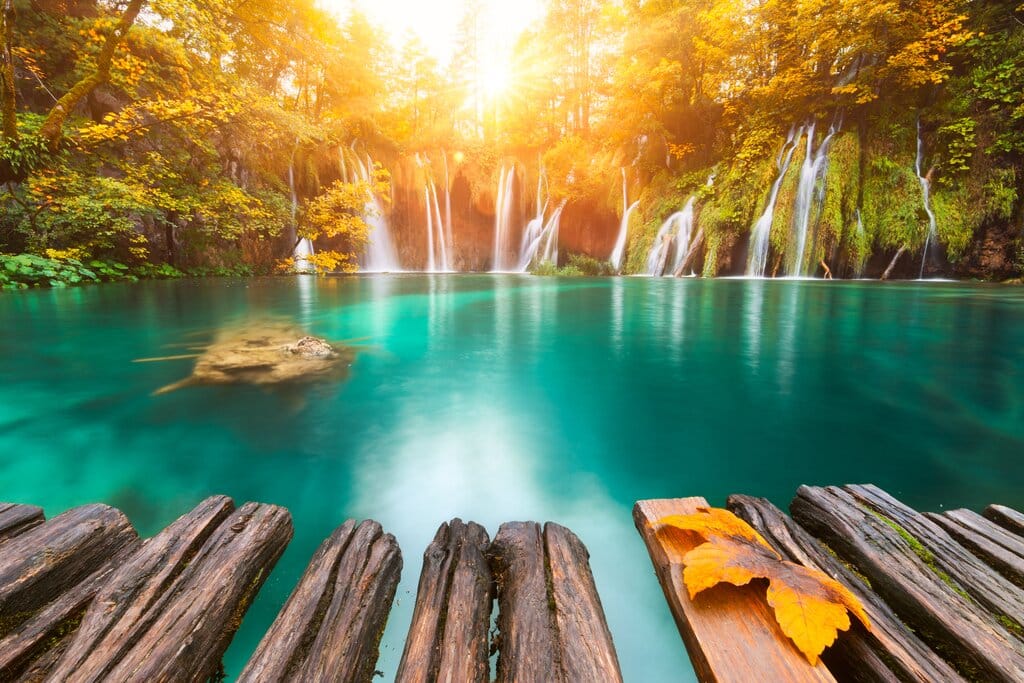
©cdn.kimkim.com
FAQ -The Croatia Guide
“Is it better to pay in Croatia by cash or card?
Both cash and card payments are widely accepted in Croatia. Your preference depends on the individual’s specific situation.
Do I Need a Visa for Croatia?
If you have an American passport, you can travel to Croatia without a visa. Upon arrival, you’ll receive a stamp on your passport, serving as your tourist visa for a stay of up to 90 days in the Schengen Area. Ensure your passport has at least one blank page for the entry stamp. Citizens of E.U. countries, the US, Canada, Australia, and New Zealand do not need a visa for short stays. Still, checking the latest visa requirements on the Government of the Republic of Croatia website is best.
Should I carry my passport with me in Croatia?
A valid passport is required for travel to Croatia. According to Schengen regulations, U.S. passport holders must have at least three months of validity remaining on their passports after their anticipated departure from the Schengen Area.
What is the time zone in Croatia?
Croatia is in the Central European Time (CET).
What’s the weather like?
Croatia experiences long, hot summers, especially along the coast, while the interior regions have short, cold, and snowy winters. Summer temperatures regularly reach 30 degrees Celsius..
Can I use euros in Croatia?
Starting in 2023, Croatia will use the Euro (€) as its official currency.
What language do Croatians speak?
Croatians do not expect you to speak their language, although a few niceties will be appreciated. Most people in tourism speak English, and many also speak German and Italian.
What Should I Pack?
If you’re heading to Croatia in the summer, expect warm weather and occasional rain. Dress casually on the coast and consider packing a light jacket for inland travel. Dinners are casual on island-hopping cruises, and daytime attire is loungewear or swimwear. A compact umbrella and earplugs for noisy neighboring ships are a good idea.
Is public transportation reliable in Croatia?
Croatia has a reliable network of buses, ferries, and trains connecting significant destinations.
The Conclusion of Our Croatia Guide
We hope we gave you a taste of how amazing this country is. That’s why a country with over 1,200 islands is worth visiting. So, now it is your turn. Please share your experiences in the comments below!
We hope you have enjoyed this Croatia Travel Guide!
Take a look at
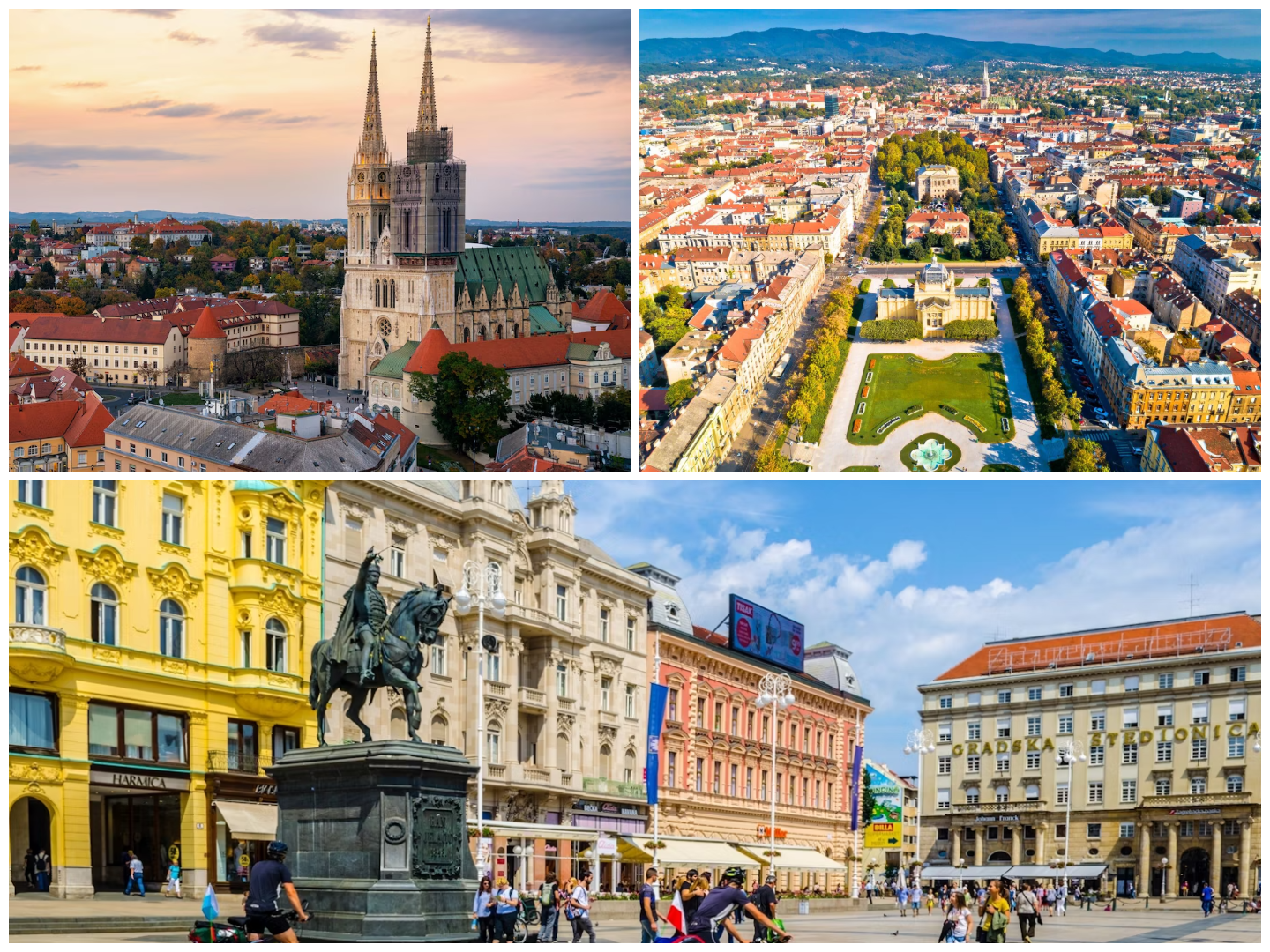
Zagreb Travel Guide
In this Zagreb Guide, we will show you why you should visit the city, when, and its most prominent attractions.
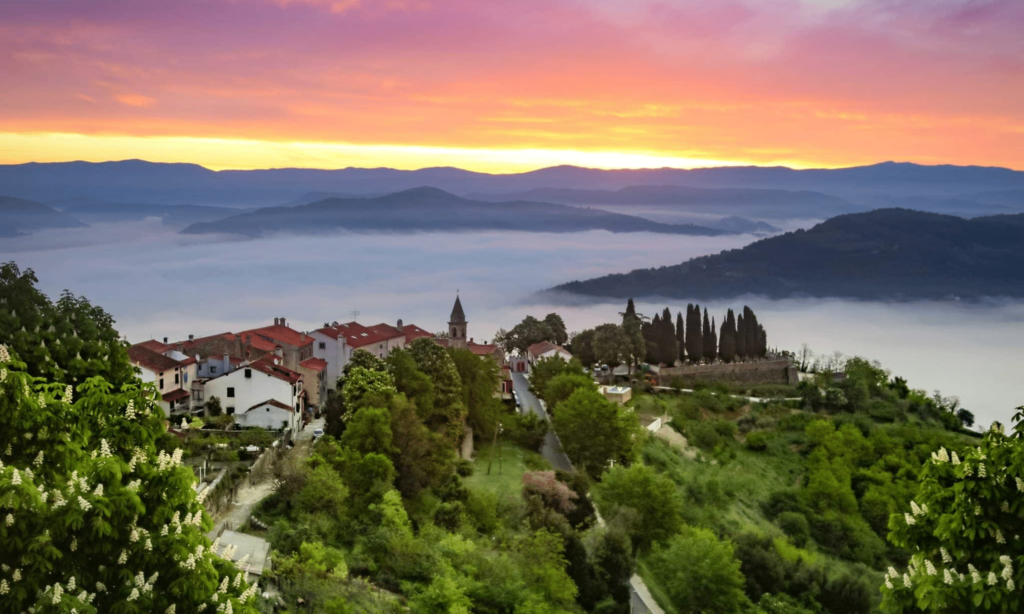
Strange Istria Attractions
This article, Strange Istria Attractions, will present you with some of the most unusual and funny attractions, which add to

Primosten – The cutest little town
Primosten—the cutest little town on the Adriatic coast—is undoubtedly one of Croatia’s top hidden gems waiting to be discovered. Its
Photo credits:
Feature photo Credits: ©venturesailholidays.com

